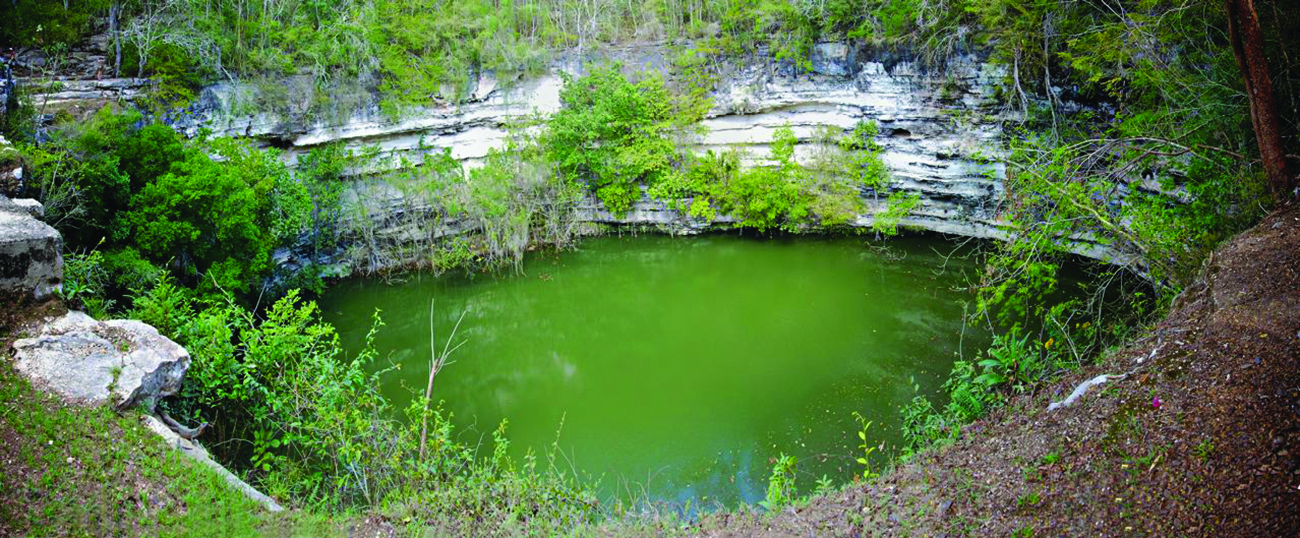8.1 Introduction
Learning Objectives
- Brønsted-Lowry Acids and Bases
- pH and pOH
- Relative Strengths of Acids and Bases
- Hydrolysis of Salt Solutions
- Polyprotic Acids
- Buffers
- Acid-Base Titrations

Liquid water is essential to life on our planet, and chemistry involving the characteristic ions of water, H+ and OH–, is widely encountered in nature and society. As introduced in another chapter of this text, acid-base chemistry involves the transfer of hydrogen ions from donors (acids) to acceptors (bases). These H+ transfer reactions are reversible, and the equilibria established by acid-base systems are essential aspects of phenomena ranging from sinkhole formation (Figure 8.1.1) to oxygen transport in the human body. This chapter will further explore acid-base chemistry with an emphasis on the equilibrium aspects of this important reaction class.

